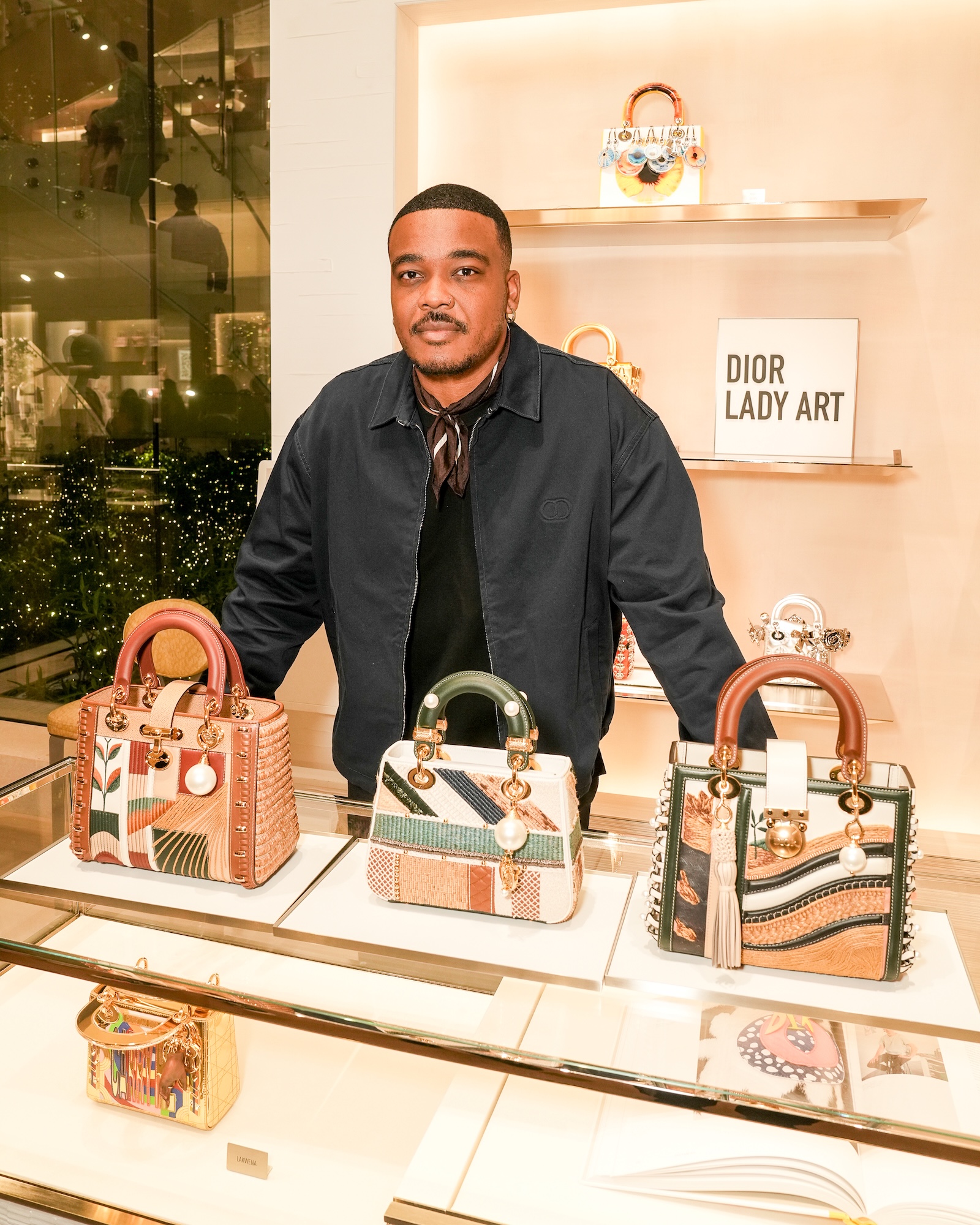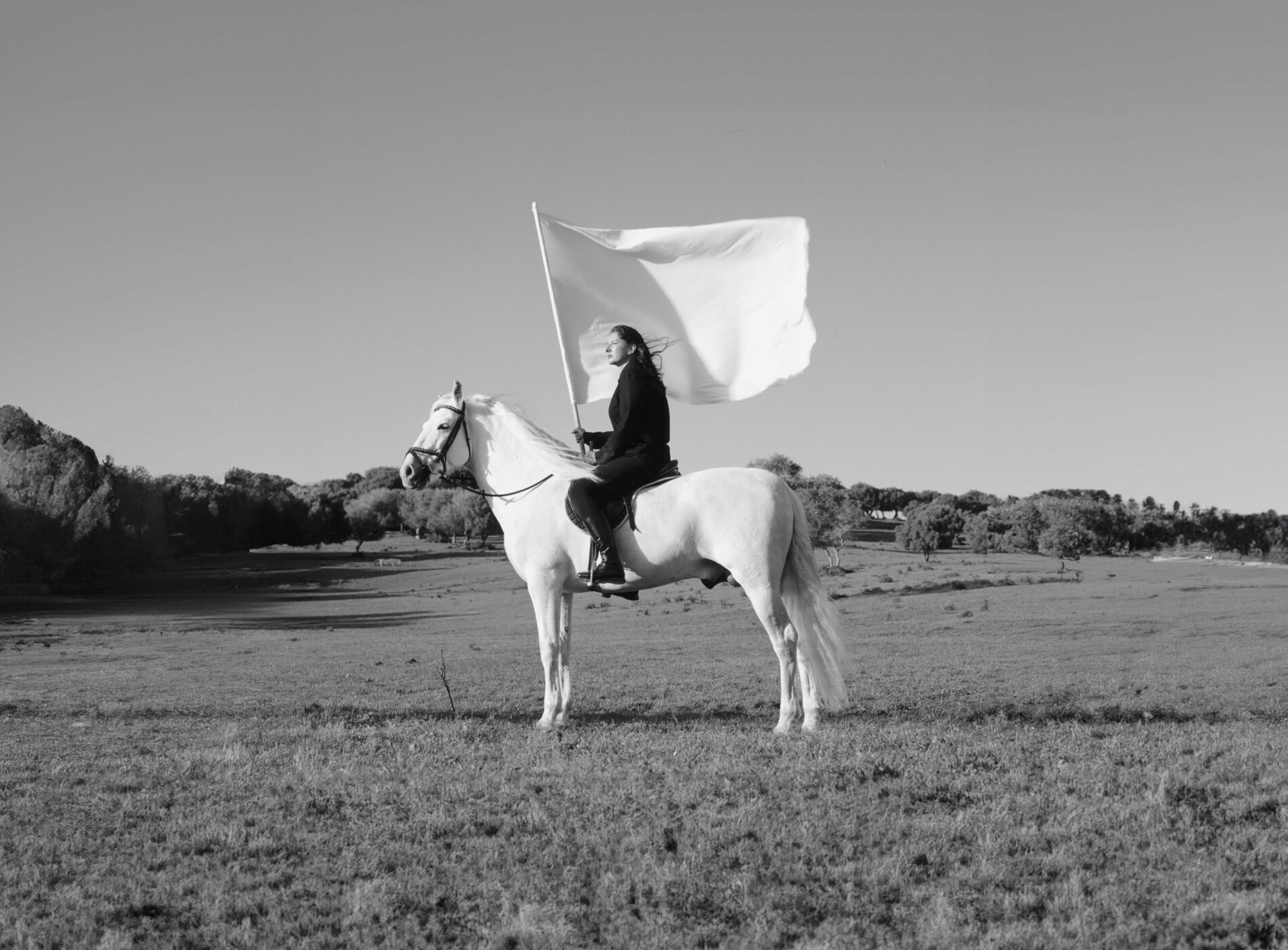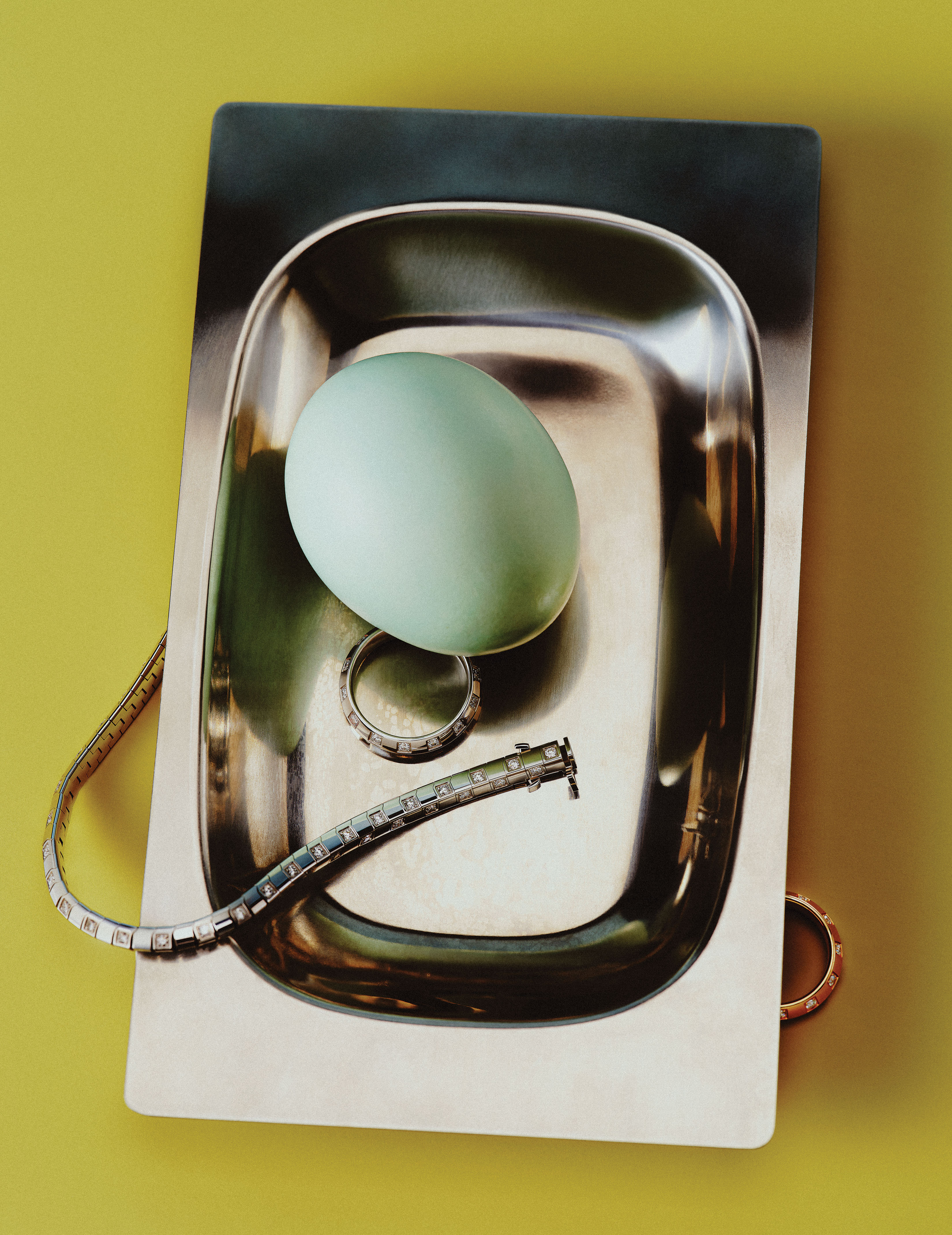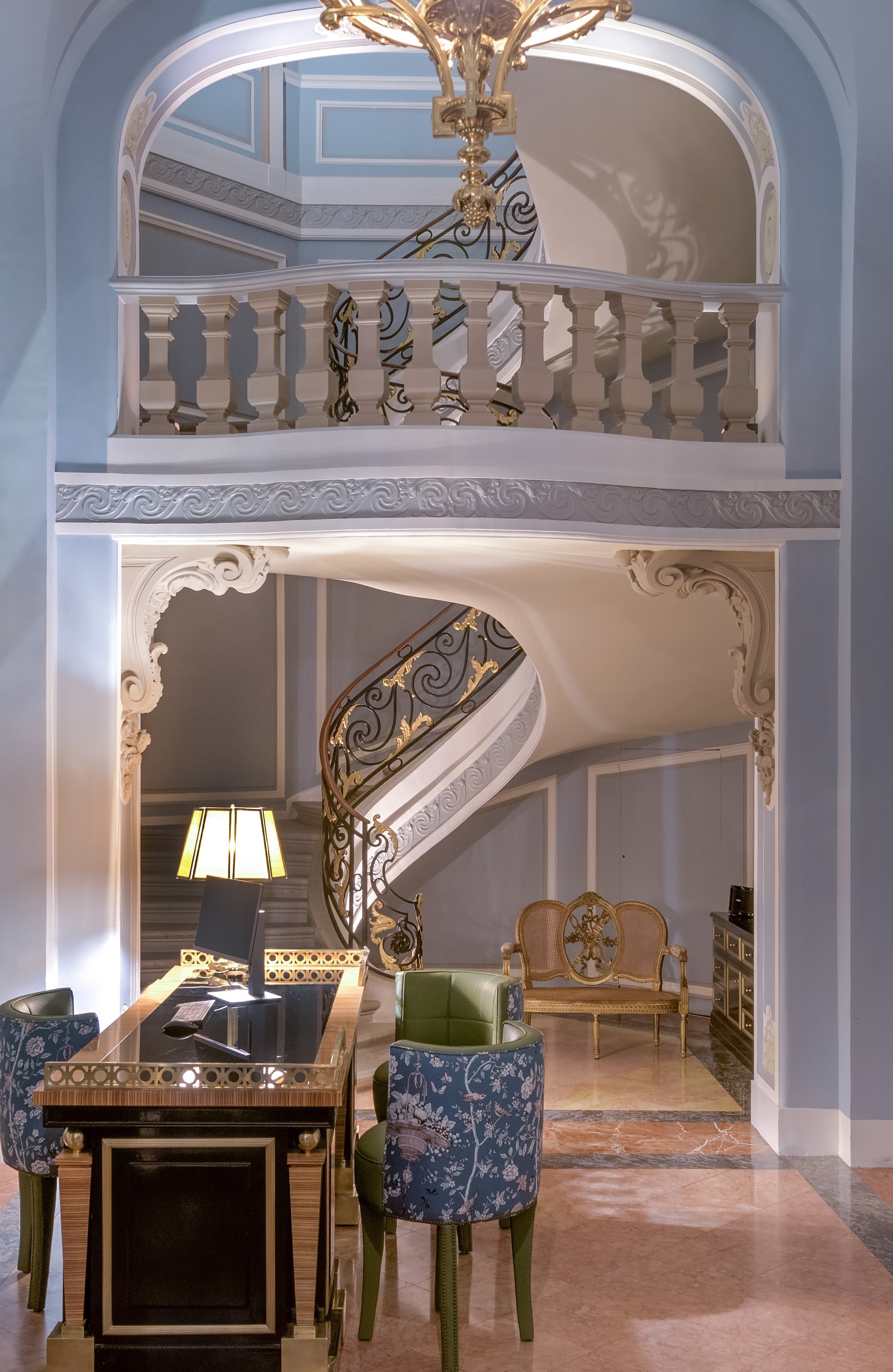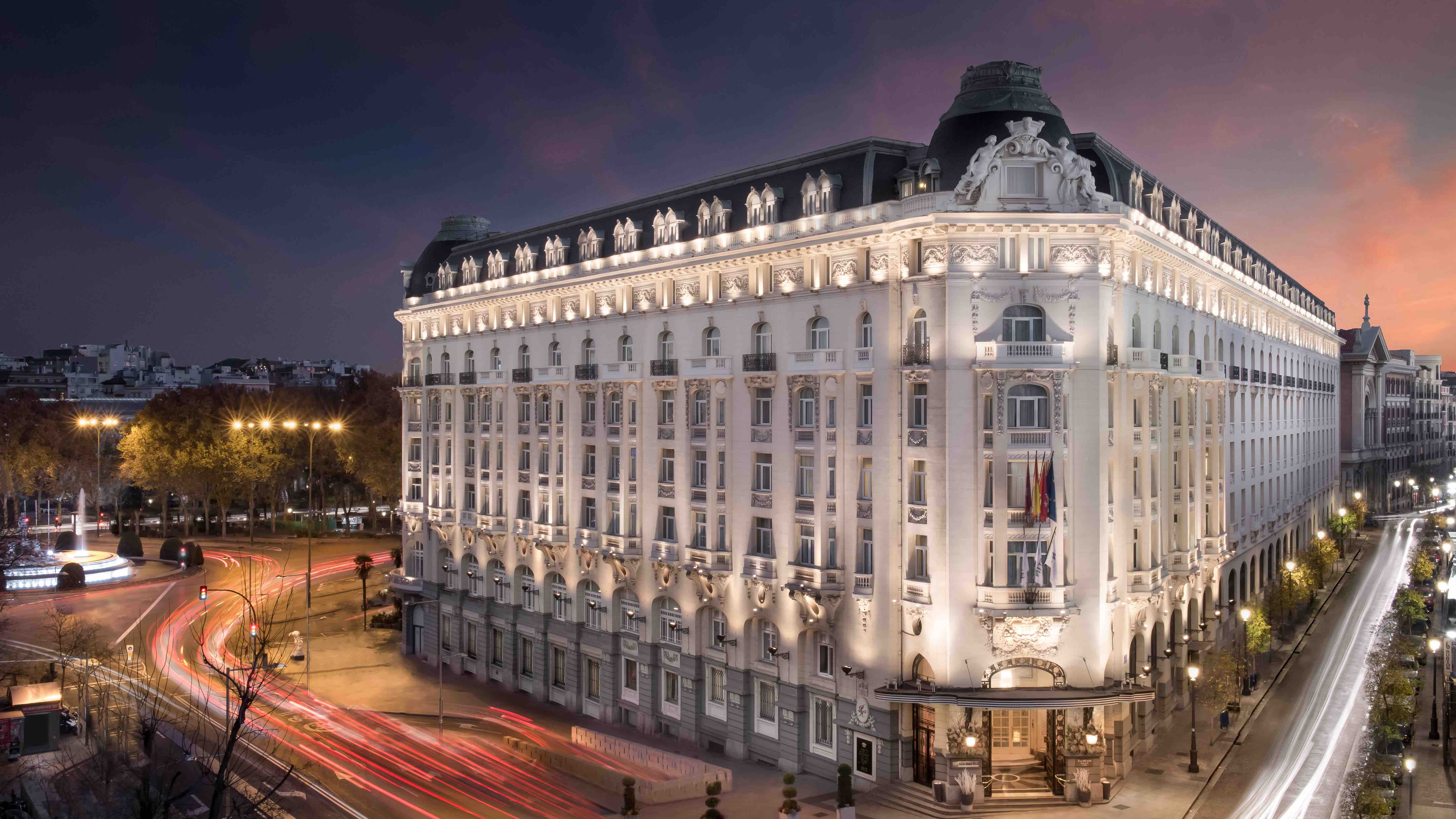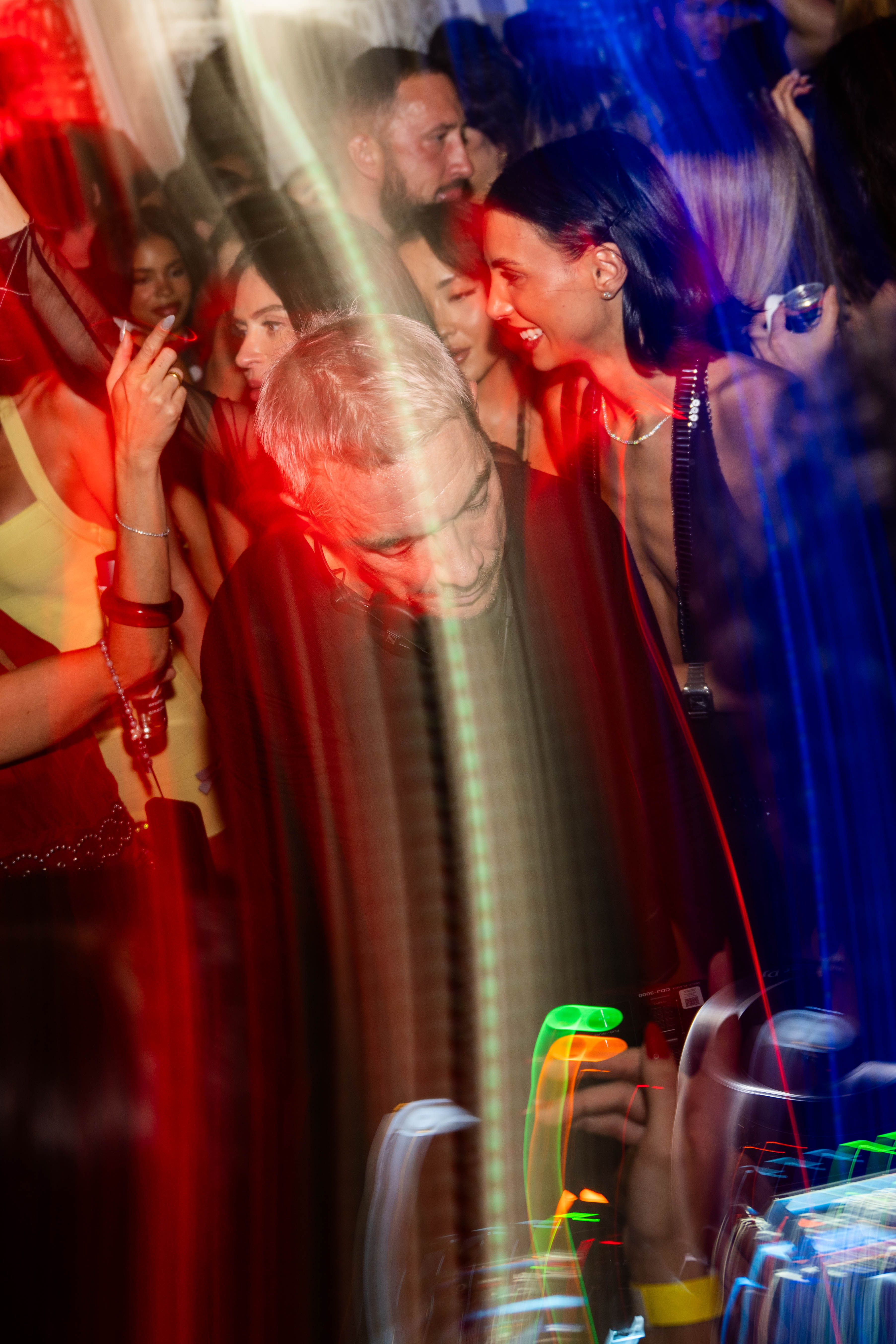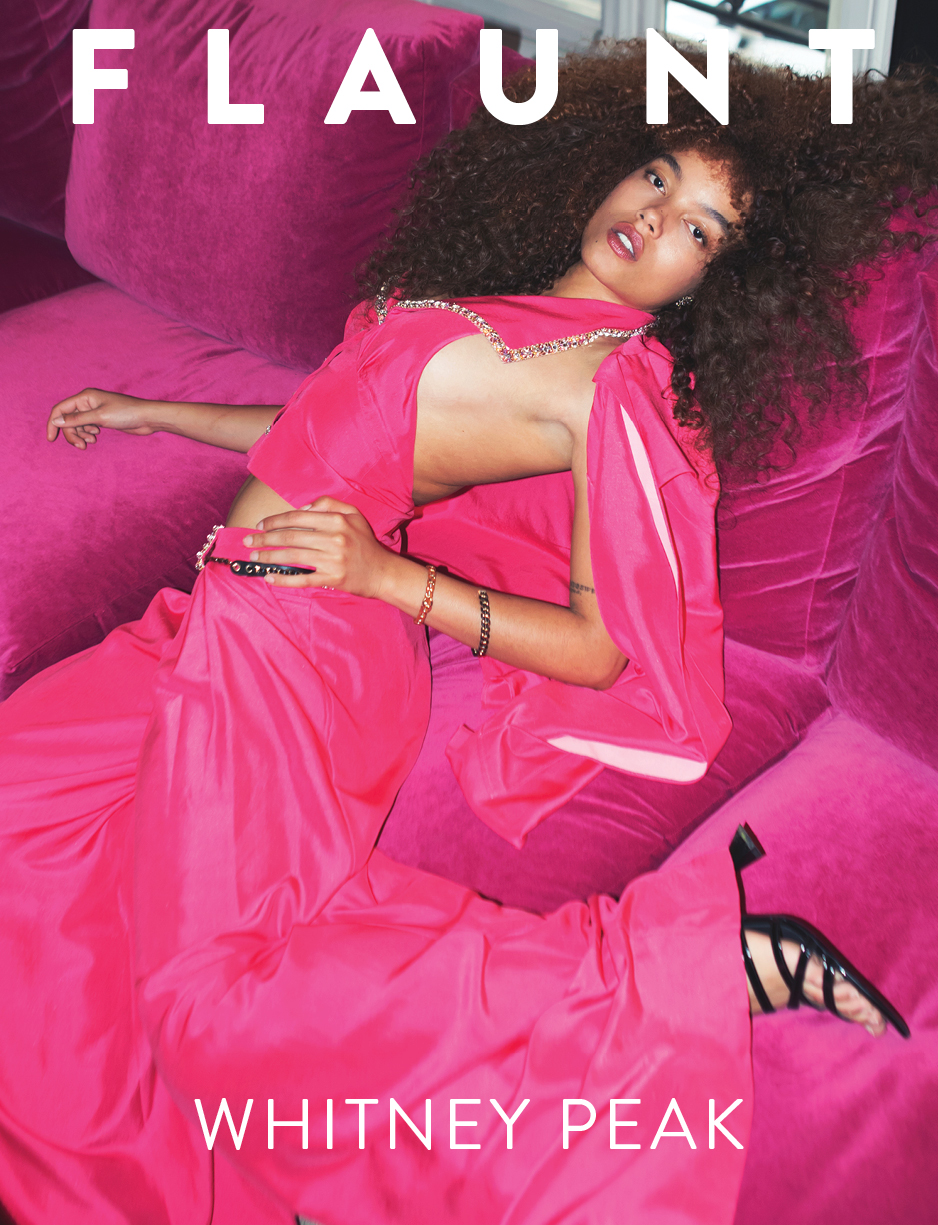![Alt Text]()
The two Aeolian sandstone columns on the porch of the Roman era Temple of Dendur, commissioned by Emperor Augustus, was once located in the village of Tuzis south of Aswan. With their bundles of papyrus stalks and lotus blossoms rising toward the sky, an image of the sun disk at the top emerged visibly from behind a black walkway. It crossed over a shallow pond created especially to stage the annual Chanel Métiers d’art collection on the ground of the 50th anniversary of the Temple’s installation inside the Sackler Wing at the Metropolitan Museum in Manhattan’s Upper East Side.
Against the clear, starlit sky beyond the glass panels, opening to a view of Central Park, models walked around the rectangular setting that surrounded the walls of the Temple’s carvings. They depict the Egyptian pharaoh making offerings to deities Isis and Osiris and her son Horus holding the scepters and ankh, symbols of life. The models wore a gold metallic jacket with an angular, wraparound, short skirt lengthened by fine pleats; a white silk long underskirt, gold tweed classic suit with shoulder cape; and a highly ornamented knit dress with sleeveless vest – an assortment of clothes that would rival exotic garments shown on ancient Egyptian carvings, those lean and sculptural images of clothes etched in stoned now rendered sumptuously with a New York flair.
Karl Lagerfeld designates a theme each year that coalesces the craftsmanship of the many specialty ateliers. This creates and demonstrates the artisanal skills at making special clothes short of being considered haute couture. The garments are produced and distributed in the network of global stores. This annual Chanel show in early December appeared in various destinations ranging from Tokyo, Shanghai, London, Moscow, Salzburg and Rome, the first one in 2002. Sartorial traditions from Ancient Egypt meant a longer silhouette for jackets, coats, dress and knits. Some of the dress and coat looks had a white layer of gauze underskirt to emphasize the elongated columnar cut. Most are with made with sophisticated fabrics and intricate handiwork from the ateliers that Chanel has bought since 1985 and established into a separate company Paraffection since 1997. Now, there are a total of 24 different ateliers that includes the goldsmith Goosens, the millener Michel, the floral specialist Lemarié, the embroiderer Lesage and Montex, the pleater Lognon, the boot maker Masaro, the glove maker Causse, the ornamentation and button maker Desrues, and the fabric flower maker Guillet. These artisans’ handiwork can be seen on long knit dresses made of small gold paillettes woven into the wool, a black tweed coat made of black tulle intertwined with gold threads, and tiny sequins and a white, cross straps, short dress decorated with a mélange of multicolored stones gems and metal strips. As the modern day Tutankhamum, Pharell Williams wore a long gold knit with a trompe d’oeil necklace sown into the sweater, gold leather pants and matching boots. The ‘Pharaoh’ would be completely at home with women in colorful, long, strapless, zig zag embroidered dress, broad shouldered jackets, and coats some with a pagoda effect cape, as well as an assortment of knit dresses from Barrie, the cashmere producer in Scotland.
There were plenty of clothes for the clients sitting in different sections to pick from when they booked their appointments at the nearby Mark Hotel the day after the show. Among the easy pickings are the boxy four patch pockets tweed jacket, the slim skirt suit with gold trims or a stripy long collar jacket, and for evenings, a beaded white long dress.
Being an ode to New York, it was inevitable that there would be a small tribute to the life blood of the city’s fashion stronghold. Streetwear was depicted in the manifestations of graffiti with hand painted, free style letterings. The logos for New York, Chanel, 29 rue Cambon, 31, Coco, Paris, and No5 were rendered in various hues of dark and sky blues or violets. Black and gold reliefs by the French painter and graffiti artist Cyril Kongo were shown on print silk blousons and skirts. XXL denim ripped embroideries were on light washed denim jacket with a shiny gold metallic knit long dress, or denim pea coat with relaxed jeans. The graffiti motif on the clothes wasn’t exactly happenstance, as there is actual graffiti on the outer wall of the Temple left by 19th century visitors who carved their names on the sandstone structure. The standout look here was the orange spray paint blouson and flare pleated dress. There’s a way of dressing down even here at Chanel.
The day before the show, the company announced the end of its use of exotic skins and furs due to the inability to find supply sources that aligned with the brand’s ethics. Instead, the brand will further research and development on textiles and leathers from the agriculture-food industries. This move will align the ethos of Chanel with those of the younger generation of consumers who are more likely to embrace the brands that share their values. Especially in fashion, consumers care about sustainability and the impact on the environment as well as how the products are made — from the sourcing of the materials to the methods of production. Other major houses like Gucci, Burberry, and even Versace have dropped furs in the last two years. Clothes and accessories now carry the moral standards of the brand that produced and market them. The black alligator-like and python-like coat, biker jacket, pant and gold boots are made of stamped leather in lieu of the real thing.
Chanel is now focusing on innovations, like ways to create new fabrics. The tweed-like fabric that actually is made of intricate embroideries of cotton and wool and the utilization of all the skills of the different specialized firms the company has been acquiring in the past two decades. Audiences globally can tune in on December 21 for a special episode of the new Netflix documentary 7 Days Out by director Andrew Rossi where the director examines the making of the Spring-Summer 2018 haute couture collections. It will be taking audience from Karl Lagerfeld’s office to the Chanel couture work rooms and follow along on trips just north of Paris at the Ėtablissement Pantin where many of the artisans ateliers are now located in one giant modern facility.
Photos courtesy of Chanel/BFA
F L A U N T


.jpg)
